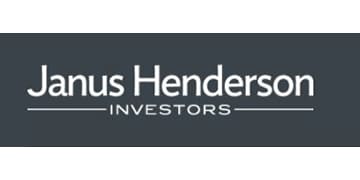
Janus Henderson UK Responsible Income

This fund has a well-defined approach to investing responsibly, combined with a tried and tested equity income investment process. Manager Andrew Jones has extensive experience in the equity income space and has a common-sense approach to this fund, allowing screens to filter the universe, followed by in-depth analysis on the remaining opportunities. He won’t chase yield and will look for a balance of growth as well as an attractive income. The fund has a bias towards mid-caps.
Our Opinion
Fund Managers
Fund Managers

Andrew Jones, Co-Manager Andrew Jones is a Portfolio Manager on the Global Equity Income Team at Janus Henderson Investors. He joined Henderson in 2005, initially working as a portfolio manager on the UK Equities Team. Before this, Andrew was a fund manager at Invesco Perpetual, where he began his career in 1995. He holds a BA (Hons) in Economics from Queens’ College, Cambridge University, and the Securities Institute Diploma. Andrew has 28 years of experience in the financial industry.

David Smith, Co-Manager David Smith is a Portfolio Manager on the Global Equity Income Team at Janus Henderson Investors, a role he has held since 2008. He joined the firm in 2002, starting in operations and later moving to the UK Equities Team before joining the Global Equity Income Team. David holds a BSc (Hons) in Chemistry from Bristol University and has earned the Investment Management Certificate and the Chartered Financial Analyst designation. He has 22 years of experience in the financial industry.
Fund Performance
Risk
Company Description
Investment process
The investment universe starts with all the companies in the FTSE350, before removing sectors the fund won’t own (due to its ethical constraints). This narrows the list down to around 280 companies. The manager doesn’t screen for income at this point, as he wants to consider a company’s future yield prospects, rather than just simply the level today. At this point Andrew will then apply the same process used across the whole Janus Henderson UK desk, which allows for collaboration with other managers.
This process looks at company fundamentals, identifying those with defendable competitive positions which have resilient cash flows and are unlikely to be disrupted. This will often be those with enduring brands or intellectual property and that are an important part of an established value chain without too much threat of new entrants.
Andrew will also look for firms with affordable capital requirements such as capex and R&D. This will identify those with the ability to pay dividends. Andrew is conscious that companies need to strike a balance of adequately investing in their business and paying an attractive income to shareholders. He does not want dividends today at the expense of a business tomorrow, so will want to see a company reinvesting in itself as well as paying an appropriate level of income.
Andrew also has an eye on valuation and will sell a stock when it meets his valuation targets. He will also sell if a company no longer passes the screening criteria, or there is a substantial change in the outlook of the business. Conversely, he will add to the holding if the share price is underperforming but nothing has changed with the company’s investment thesis.
This valuation discipline and awareness of the sustainability of dividends will mean the fund will have a range of stocks yielding between 1.5% and 6%. Above this level Andrew becomes sceptical and may see the stock as a potential value trap.
The final portfolio will contain 60-70 names. Andrew believes this is the sweet spot between the diversification of income streams and consistent returns. Normally, all stocks in the portfolio will pay a dividend, though he may hold stocks that have temporarily suspended theirs if there is good reason and a path back to paying them again.
Risk
There are no formal constraints on the weights of stocks and sectors within the portfolio, but Andrew has a soft rule of 3-3.5% overweight of a single stock for risk purposes. The fund has a bias towards mid-caps, an underweight to large-caps and will hold very few small-caps. Andrew and the team will have a quarterly risk review to make sure they are on top of their allocations and to reassess why they are positioned where they are.
ESG
ESG - Explicit
The fund has a two-step approach with ESG. Firstly, there are the initial screens which remove companies and industries the fund can’t invest into. The resultant universe is then subject to full ESG analysis. The avoidance criteria are led by clients, with consultations every few years. They come under three broad criteria: People, Environment and Animals, and include industries such as fossil fuel extraction and power generation, animal testing, fur, chemicals of concern, alcohol, armaments, gambling, tobacco and corruption. This excludes around a third of the universe by market cap, though only a fifth by number, showing that this typically excludes the largest companies in the index. There is an allowance for up to 10% of revenue to come from an excluded industry to allow for companies that are transitioning. A good example of this is SSE, which is one of the largest renewables providers in the UK, but which has some legacy coal assets which it is closing down and transitioning away from. The resulting portfolio has a carbon footprint that is a fraction of that of the FTSE All Share benchmark. In the stock analysis, there is further consideration given to governance, with a desire for management incentives to be aligned to shareholders, and a particular focus on the sustainability of the dividend.







